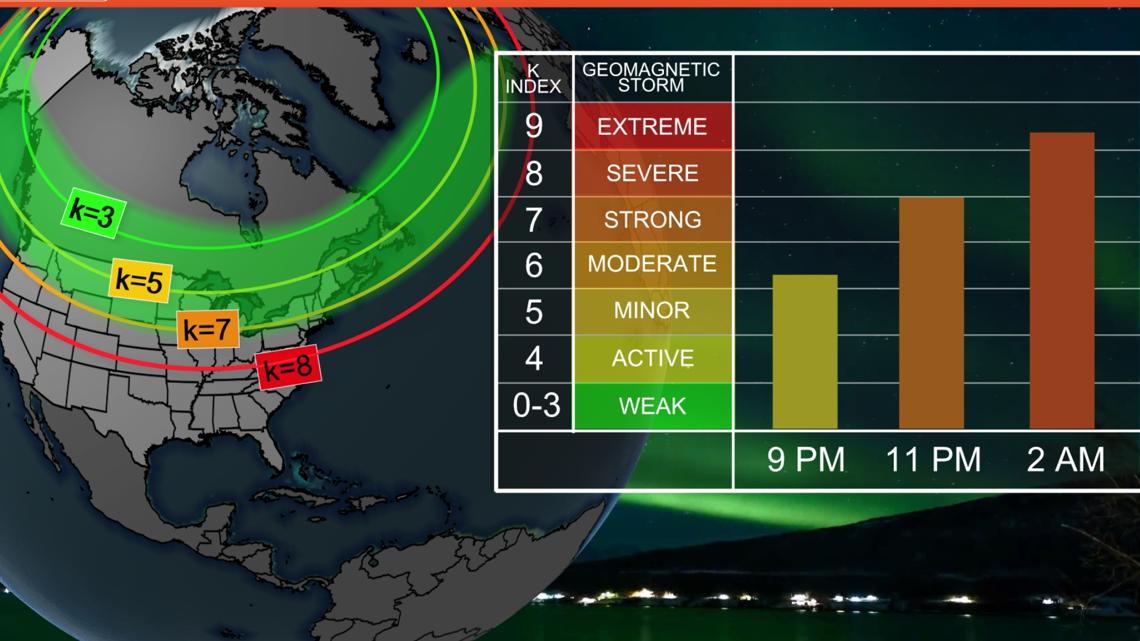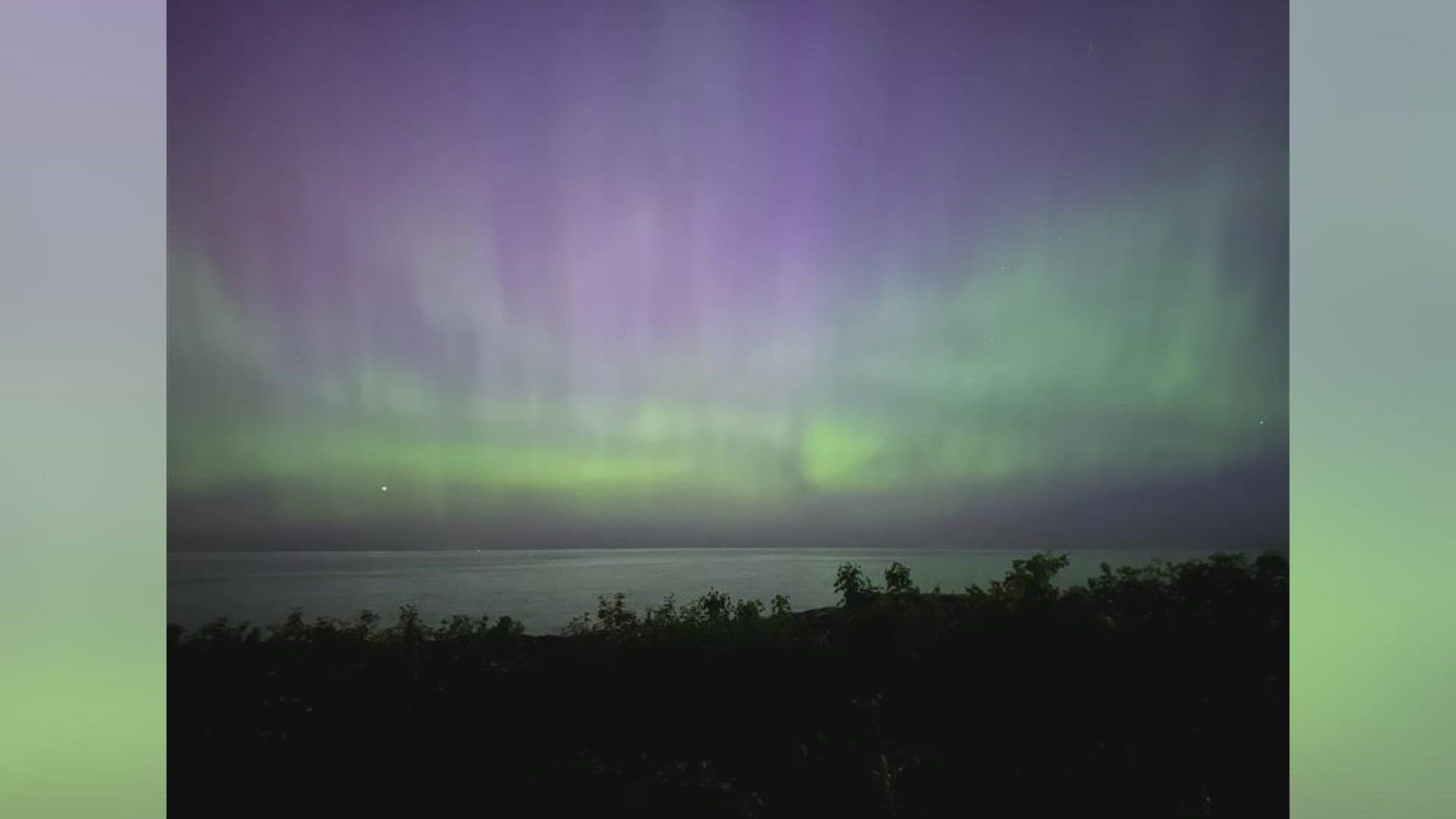CLEVELAND — Look up!
The northern lights could be "very active" this weekend, according to the National Weather Service in Cleveland — and we have a chance to see the phenomenon here in Northeast Ohio.
It comes as the National Weather Service said the Space Weather Prediction Center has issued a rare G4 Severe Geomagnetic Storm Watch for the first time since January 2005.
“The aurora may become visible over much of the northern half of the country, and maybe as far south as Alabama to northern California,” according to the Space Weather Prediction Center.
Sure enough, photos began pouring into 3News of the incredible phenomenon, including from some of our own reporters!
Here's a look at the northern lights possibility for tonight and into tomorrow morning:


"At least five earth-directed coronal mass ejections (described as an eruption of solar material) were observed and expected to arrive as early as midday Friday, May 10, 2024, and persist through Sunday, May 12, 2024," according to the G4 Watch description. "This is an unusual event."
These coronal mass ejections (CMEs) "will lead to highly elevated geomagnetic activity," according to the National Weather Service.
When asked what this means specifically on their Facebook page, the National Weather Service in Cleveland offered the following explanation:
"It could mean that the northern lights could be seen much further south into the USA this weekend. We will have mostly clear to partly cloudy skies Friday night and that is when the CME that was thrown off the Sun could interact with the Earth's geomagnetic atmosphere to cause northern lights in lower latitudes."
What about our view here in Northeast Ohio? Here's a look at the weather forecast as we head into the weekend:
What is the aurora borealis? Here's how NASA explains it...
Auroras are brilliant ribbons of light weaving across Earth's northern or southern polar regions. These natural light shows are caused by magnetic storms that have been triggered by solar activity, such as solar flares (explosions on the Sun) or coronal mass ejections (ejected gas bubbles). Energetic charged particles from these events are carried from the Sun by the solar wind.
When these particles seep through Earth's magnetosphere, they cause substorms. Then fast moving particles slam into our thin, high atmosphere, colliding with Earth's oxygen and nitrogen particles. As these air particles shed the energy they picked up from the collision, each atom starts to glow in a different color.
As for advice to see the northern lights, the Space Weather Prediction Center says the best viewing is "usually within an hour or two of midnight," so between 10 p.m. and 2 a.m.
"These hours of active aurora expand towards evening and morning as the level of geomagnetic activity increases," according to the Storm Prediction Center.
Also, be sure to get away from any city lights as conditions need to be dark.

